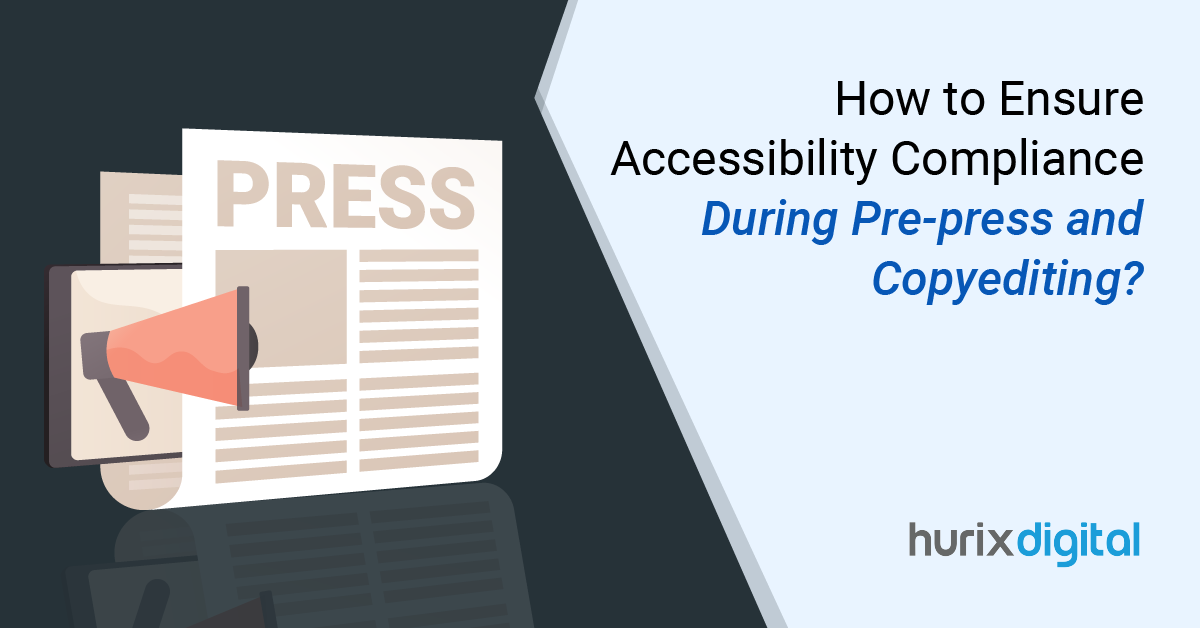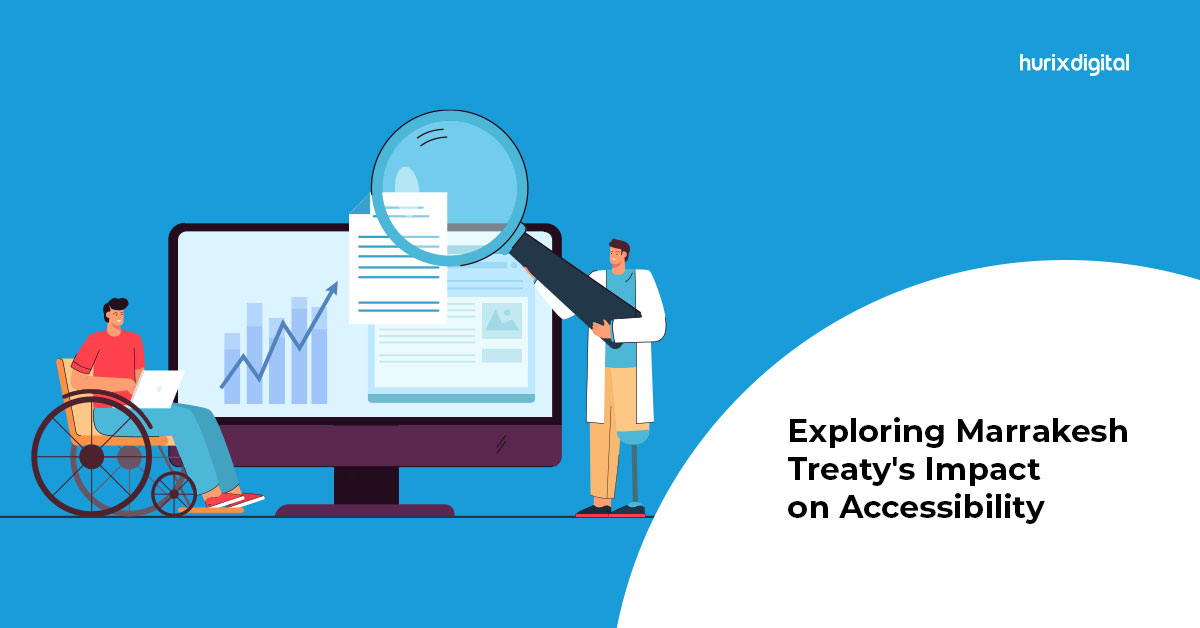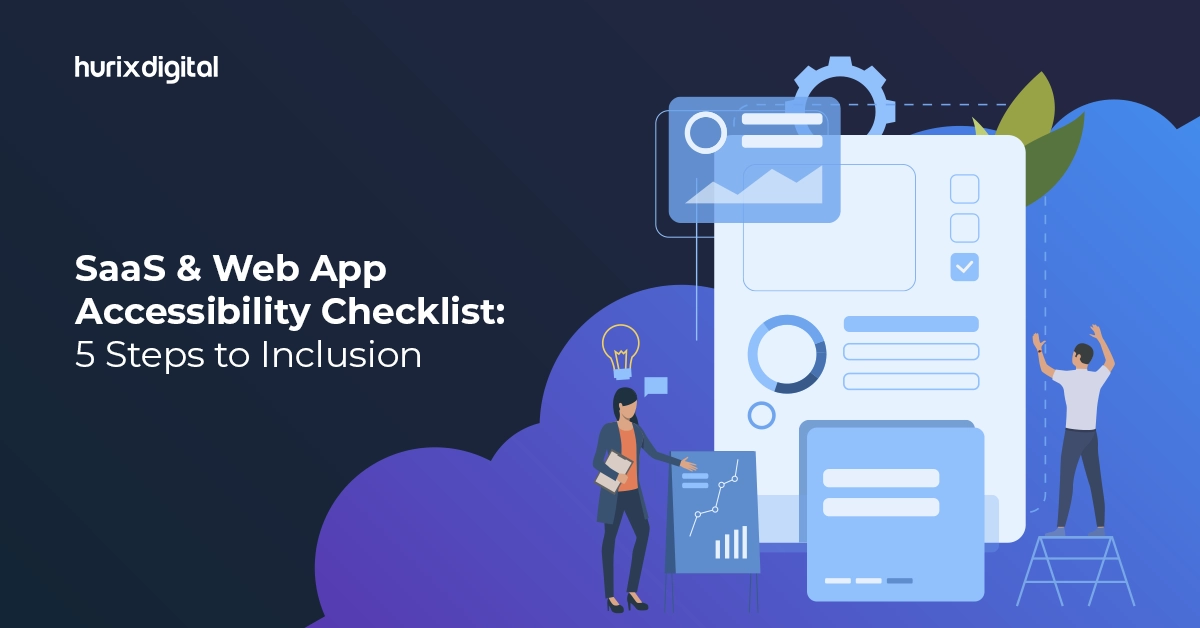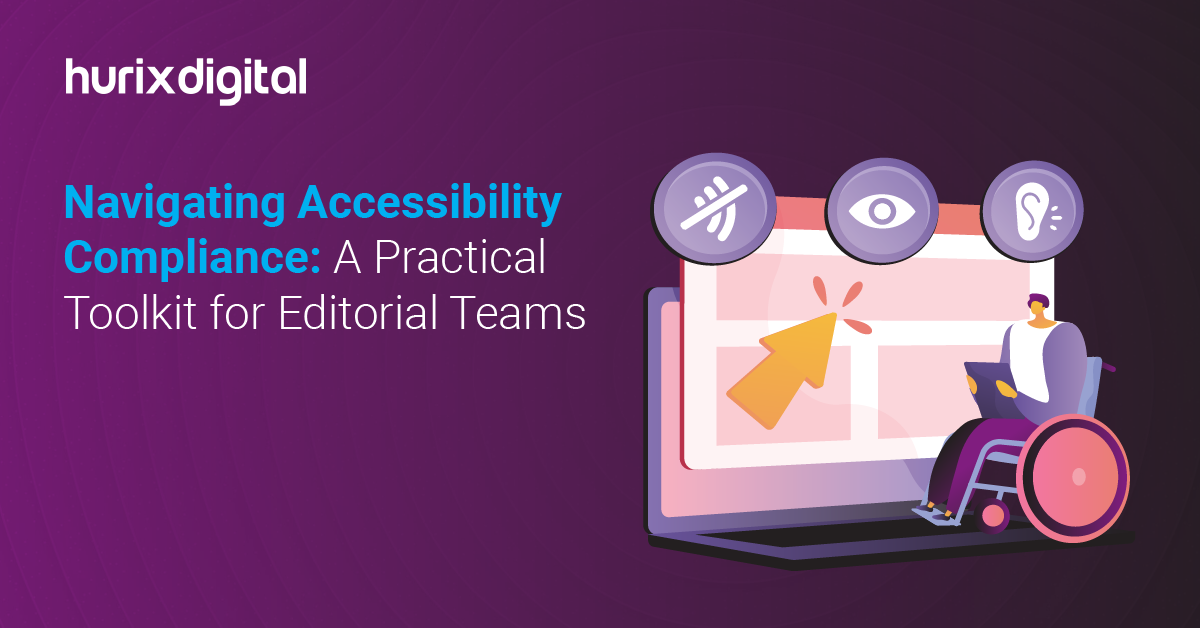
How to Ensure Accessibility Compliance During Pre-Press and Copyediting?
Summary
This blog covers web content accessibility, detailing 7 ways to ensure compliance: clear language, alt text, color/contrast, descriptive links/buttons, operable navigation, readable fonts, and testing.
Whether you are a copyeditor or a publisher offering pre-press services, you ensure your content is accurate and conforms to your preferred publication’s style. But even a balanced and factual piece of content does not make sense if a significant proportion of your audience cannot access it.
This is where accessibility compliance comes in. It involves catering to the needs of 1.3 billion disabled people globally and providing them with content they can read and enjoy.
Accessibility aims to develop unique and accessible digital experiences that all learners can access, regardless of their disability. Web content accessibility is specific to how accessible your digital content is, which includes images, text, audio, or video content.
In this post, we will learn more about web content accessibility and how to ensure accessibility compliance during pre-press services and copyediting.
Table of Contents:
Top 7 Ways to Ensure Accessibility Compliance with Pre-press Services
You can employ several ways to ensure accessibility compliance with copyediting services. Some of these are discussed below:
1. Simple and Clear Language
Using simple and clear language is very important and beneficial for users with varied proficiency levels, literacy, learning ability, and comprehension. It also helps communicate a clear, concise, and direct message to any reader.
Considering the vast difference in audience profiles, it is equally important to use text according to your target audience and consider what is simple and understandable for them to comprehend. Editors must focus more on the readers and consider sentence structure and vocabulary.
Also Read: Best Printing Software and Prepress Tools for Professional Printing in 2024
2. Offer Alternative Text for Images
Accessible visuals, such as images, serve as effective tools to enhance content and convey information and emotions more effectively. However, readers with visual impairments cannot see or interpret these images or use screen readers to interpret them.
Use alternative text (alt text) that precisely describes the content and function of accessible images for readers with visual disabilities and avoid unnecessary jargon.
The alt text should be no longer than 125 characters and not repeat information already in the copy. Consider being descriptive about the images in the content so viewers get an immersive experience.
3. Make Use of Color and Contrast Wisely
When it comes to ensuring compliance with pre-press services for web accessibility, contrast and color are two of the most important aspects to consider, as they create a distinct visual appeal and better emphasize information.
Incorrect contrast and color make your copy difficult to scan or completely inaccessible for certain readers, especially those with disabilities such as color blindness or low vision.
To make content accessible, use high contrast between your text and background, choose colors compatible with different types of color blindness, and avoid using color alone to convey meaning.
4. Use Descriptive Links and Buttons
Links and buttons are some of the most essential elements of your copy, as they allow readers to take appropriate action or access more information. It is crucial to make your links and buttons descriptive, or they might confuse your readers, especially if they use screen readers or keyboard navigation.
Use meaningful and specific text to make your links and buttons accessible and tell your readers what to expect when they click them. A few of the best practices to follow here are:
- Avoid vague or generic terms such as ‘read more,’ ‘click here, or ‘submit.’
- Include more actionable terms such as ‘contact us,’ ‘download our ebook,’ and ‘sign up for our newsletter.’
5. Make Navigation Operable
Another important accessibility compliance requirement for pre-press production and copyediting is structuring your content more logically to be easily navigated. Here are some of the ways to make navigation operable:
- Headings: Structure the content with clear, concise, and purposeful headings, such as H2s, H3s, etc.
- Titles: Use clear titles that describe the topic or purpose. This includes H1, that a screen reader will read out specifically as ‘Heading level one’.
- Links: Include a lot of descriptive links to help users understand where a particular link or call to action (CTA) will take them or what they are downloading
6. Optimize Font Size and Style
Font sizes and their styles can significantly impact the readability of content and play a key role in pre-press services and copyediting.
Choosing fonts that are easy to read on various devices and screen sizes is crucial. Sans-serif fonts (Arial or Helvetica) are typically considered more legible on different screens than serif fonts.
Ensure that the font size you use is legible and adjustable. This enables users to increase or decrease the font size according to their preferences, ensuring proper accessibility for individuals with visual impairments.
7. Test Your Content Copy
If you are unsure about the accessibility of your copy, it is best to test it. By testing your web copy with multiple users, you clearly understand what you’re doing right and what you need to improve.
Accessibility testing is a safe way to avoid accessibility issues for improved reading experiences. Here are a few things to ask yourself to ensure higher accessibility of content during prepress solutions, proofreading, and copyediting:
- Would the content work fine for users with a screen reader?
- Is the content easily accessible for someone who doesn’t speak English as their first language?
- Does the content work fine with other assistive technologies?
- Are the hyperlinks easy to see and find on your website?
These questions will help you narrow down what needs to be changed about your website and what’s working fine. You can also enlist the help of a copywriter who specializes in writing accessible copy.
Also Read: Improving Print Quality and Brand Image Through Effective Prepress Techniques
Last Thoughts
Adopting these accessibility compliance best practices as integral steps in pre-press and professional copy editing services can make a significant difference for a specific audience with various disabilities.
Further, accessible content is generally easier for all users to understand and comprehend, as most of these accessibility practices are well-designed and can lead to clear, well-structured content.
If you are also looking for accessibility solutions for your publications, Dictera by Hurix Digital offers custom solutions and the best pre-press service for digital learning and publishing across the education, workforce learning, and publishing sectors.
Connect with us today to get tips for your website’s accessibility!

Vice President – Digital Content Transformation. He is PMP, CSM, and CPACC certified and has 20+ years of experience in Project Management, Delivery Management, and managing the Offshore Development Centre (ODC).






